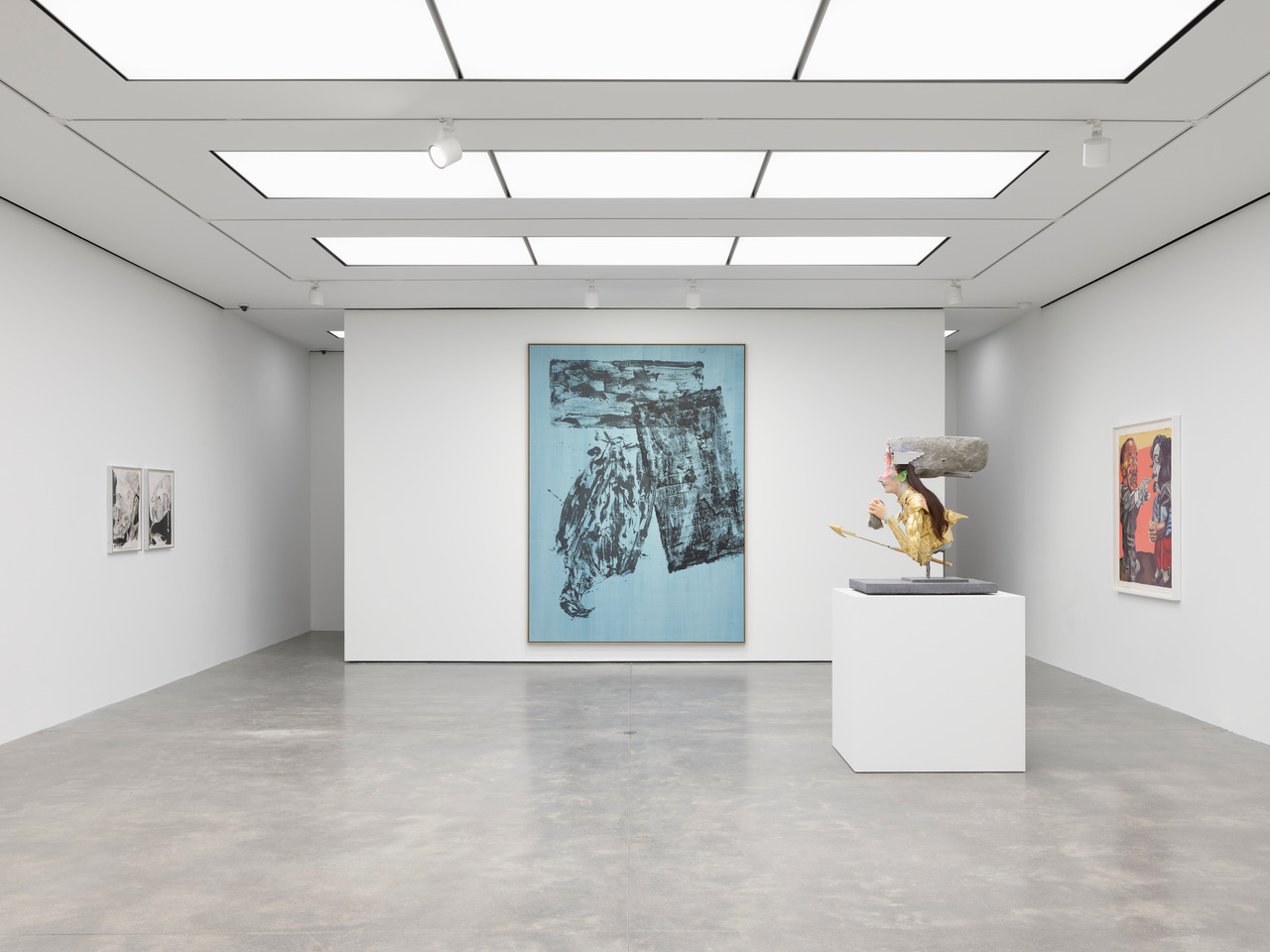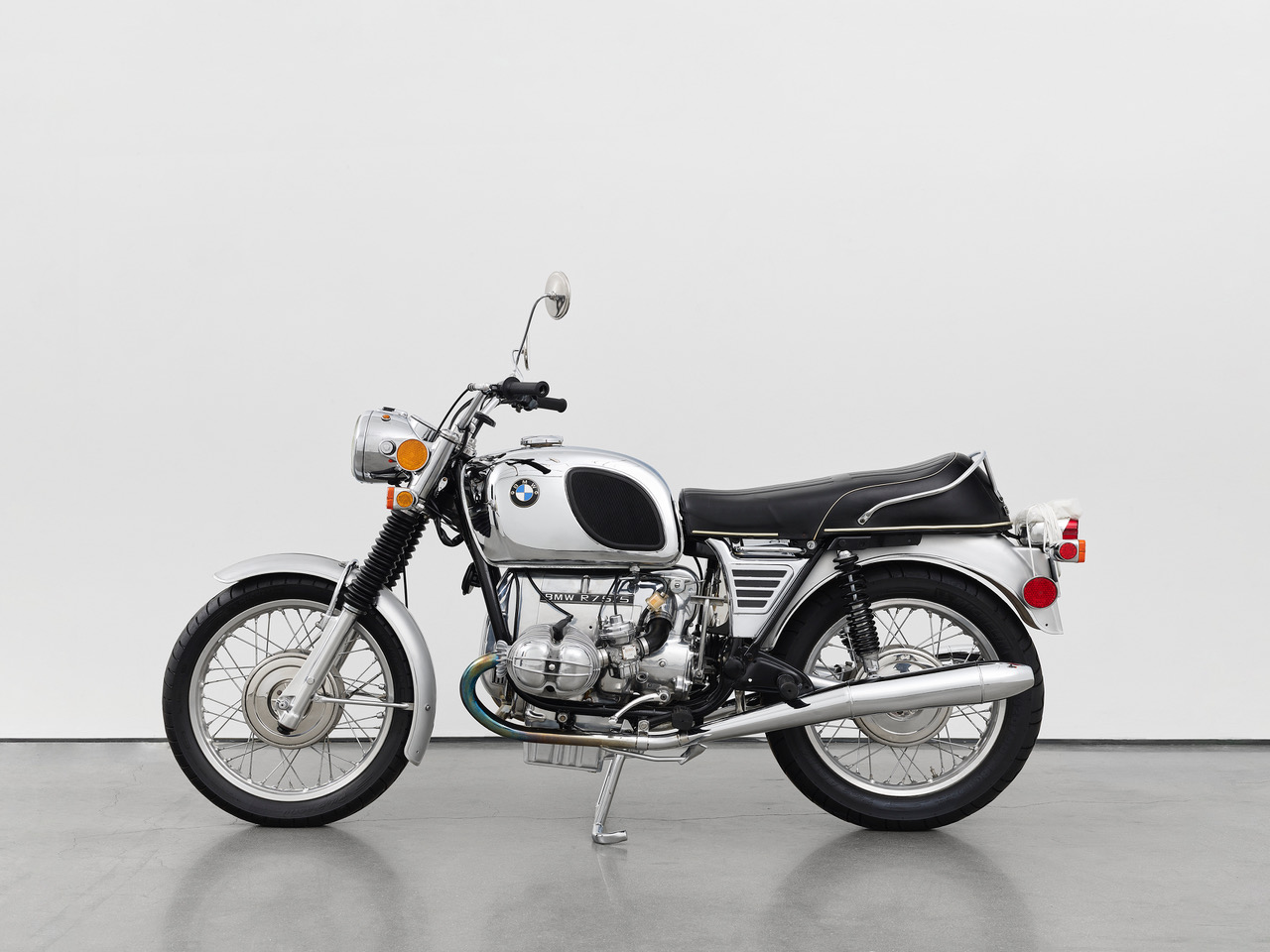
With Chopped and Screwed, White Cube makes New York City its long-awaited permanent residence stateside.
Walking into the new White Cube Gallery in Manhattan, New York City, feels like a breath of fresh air in a city that’s so densely populated that sometimes it feels like everyone is walking on top of each other. That could be due to the bright white walls, a mainstay of galleries. Or it could be that the new location, which opened on October 3rd, boasts immense walls across its three floors, including a mezzanine level, offices, and private viewing rooms. The building, built in 1930, has retained its original facade from when it was constructed for the Fulton Trust Company Bank. Most recently, the building functioned as the home of First Republic Bank. Located uptown at 1002 Madison Avenue, the gallery counts as its neighbour galleries like Gagosian and Acquavella and museums like The Frick Collection and the Metropolitan Museum of Art.
Despite being one of the art world’s preeminent contemporary art galleries since its first location in 1993, this is the first in the United States, which is shocking given New York City’s role in the history of contemporary art. Since the gallery’s founding, there have been several seasonal outposts in Aspen and West Palm Beach but no permanent presence. Though its debut stateside is overdue, it’s making its presence known with its inaugural exhibition, Chopped & Screwed. Curated by the gallery’s senior director, Courtney Willis Blair, it’s on display now and will close on October 28th. Paying homage to the music genre that was created by DJ Screw in Houston, Texas, in the early 1990s, the exhibition features 19 artists working across several mediums, including work from Tiona Nekkia McClodden, Adrian Piper, General Idea, Carol Rama, David Hammons, and Michael Armitage.
While the only direct and recognizable reference to DJ Screw’s chopped-and-screwed genre is the title, the paintings, sculptures, drawings, and objects that populate the street level and second floor of the gallery investigate the transgressive systems and structures of power that dominate our society by challenging notions of heteronormativity, Black sexuality, gender, and state-sanctioned violence.

As viewers first enter the gallery space, they immediately encounter Tiona Nekkia McClodden’s The Lover, off the road (after Barbara) (1972-2021), a BMW R75/5 motorcycle with black paint and metal chrome. Produced in 2021 for a solo show, the motorcycle is the exact model owned and driven by feminist filmmaker Barbara Hammer. The black leather and chrome have been polished, creating an alluring shine that makes it impossible to look away.
Researching Hammer, McClodden came across a photograph of her on the bike, prompting her to seek out the bike and restore it as a way to celebrate and honour the filmmaker. More than that, though, the motorcycle is symbolic of the freeing of the self Hammer experienced after her divorce and coming out as a lesbian. Hammer purchased the motorcycle to take a cross-country trip because she had married her husband on the condition that they could travel, and after divorcing, she was finally free to do so. For a woman in the 1970s who had just experienced a divorce, the motorcycle and the trip she took after purchasing it stand as a symbol of liberation, rejecting the gendered societal expectations placed on women.
In preparing the motorcycle for its reincarnation as artwork, McClodden drained it of all its fluid and removed any moving parts, rendering it unusable. That is, for anyone but Hammer. As a Santeria practitioner, McClodden believes in the sacredness and power of a Baño Santero with efun, a white substance made from ground-up eggshells. The ceremony is performed to clear negative or chaotic energy and provides a protective barrier while also honouring deities. Placed on the back of the bike is a small white package that holds remnants of McClodden’s Baño Santero, thereby offering protection to the bike and honouring Hammer and her journey. As Blair states, this gesture is McClodden communicating to Hammer, ‘This is your bike. No one else can ride it.’
Also located on the first floor is Air Jordan (1988) by David Hammons, a piece created with bottle caps and the inner tube of a tire. Like McClodden’s bike, which can not be used, Hammons has taken a tire and contorted it into an object almost indecipherable from its original usage. Looking at the piece from the vantage point of the motorcycle, or truly anywhere in the space, the material used is distorted, creating an illusion of draped fabric with cowrie shells. Like Hannah Wilke’s use of chewed gum in S.O.S. Starification Object Series (1974-82) she moulded into vulvar shapes, the presence of the bottle caps as shells in Hammon’s piece alludes to femininity and fertility. This symbolism compels the viewer to think about how Black sexuality is twisted into something it is not and utilized as a justification for violence. The tire hangs on a hook, giving it the appearance of a KKK hood, calling to mind the history of Black male bodies being violated because of alleged interactions with White women.

Theaster Gates’ Civil Color Spectrum (2023), located on the opposite wall, likewise examines the history of state-sanctioned violence against Black bodies. The artist utilized decommissioned fire hoses in varying shades of red and yellow adhered to wood to create a piece that, while visually stunning, speaks to an iniquitous past. Gates references The Birmingham Campaign of 1963, a protest during the Civil Rights Movement during which protestors were violently attacked by police dogs and high-pressure fire hoses, turning two seemingly innocuous objects into federally governed tools of violence.
Through these and other pieces on display in the first room, there’s a recurring theme of the body and its relationship to the state and society. In Great AIDS (Black) (1991/2019) by General Idea, the AIDS pandemic is referred to in an attempt to raise awareness of the AIDS epidemic that by the end of the 1980s had claimed 100,777 lives. By featuring their familiar AIDS logo, which was designed in reference to Ad Reinhardt’s ‘Black Paintings and Robert Indiana’s ‘LOVE’ series, in Black paint on a Black linen canvas, the collective’s work implores viewers to move in and engage with the piece much more intimately than others. This can be interpreted as a response to the behaviour towards HIV/AIDS-infected men and women treated as if standing next to them would cause someone to become infected with the disease.
To get to the second floor of the exhibition, visitors have to walk through a private viewing room, which offers an opportunity to sit and admire artwork not associated with the show. Entering the second floor of the gallery, Georg Baselitz’s immense oil painting Francis in Willich (2023), installed on the back wall, attracts the attention of the viewer. The black and blue piece is simplistic in style, featuring two rectangular blocks and an eagle, but it is through the incorporation of the eagle, which is placed upside down, that invites contemplation.
The eagle has long held cultural significance for many nations and often epitomizes strength, freedom, and courage. Baselitz challenges the economic power of the military by rendering the eagle upside down with its wings closed, rescripting it from its embodiment of an idealized country to a provocation of its symbolism. It not only compels viewers to consider not only the financial cost of the military but also the emotional and financial costs.

Located a few steps away, Mona Hatoum’s Still Life (medical cabinet) I (2023) likewise examines the power that war and the many militaries worldwide have on systems in society. The artist depicts a medicine cabinet, an item traditionally used to house first aid items, but replaces pills and potions for what, from a distance, looks like delicate glass objects in rich, autumnal colours. Moving in closer, it becomes clear that they are hand grenades. The artist juxtaposes the fragile quality of glass with the destructive nature of grenades. Hatoum’s installation foregrounds how objects can sometimes promote the illusion of being harmless yet can be adapted into tools of violence.
Neighbouring paintings further examine violence, such as Michael Armitage’s Mimi No Mwizi Ya Soko (2023), which utilizes Lubugo bark cloth, a material made from the outer layer of the bark of a ficus tree. Unlike canvas or linen, Lubugo has an irregular, at times rough texture. Looking at the piece closely, there is a noticeable hole at the top of the frame, emphasizing the departure from the materials traditionally associated with oil painting. Prominently featured is a Black male figure who appears to have his hands tied with rope above his head. Around his neck, there is a sign that reads in Swahili, ‘mimi no mwizi ya soko,’ which translates to ‘I’m no market thief.’ The governing body, in this context, Kenya, is represented via the red figure in the background, the figure who possesses the power to judge.
Throughout Chopped & Screwed, the figure in power and the structures and systems they uphold are embodied in various forms, from Julie Mehretu’s Rubber Gloves (2018), which depicts state-sanctioned neglect as seen in the Grenfell Tower fire to McClodden’s examination of the oppressed and the oppressor, as is represented in A Mercy IV (2023). Though the genre of chopped and screwed is decidedly American, the artists challenge the dominant narratives that continue to prevail, not just in the United States but worldwide. Bridging geographical distances through their art, they offer examples and paths of how their work, as is stated in the press release, ‘resist established systems of power and value.’
Words by Karla Méndez. Images courtesy of White Cube New York.






